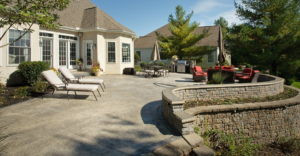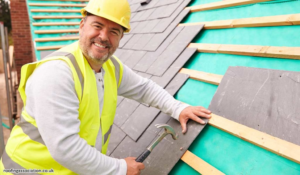Estate auctions are an efficient way to liquidate assets. They can be used to pay debt, split inheritance, or deal with a deceased loved one’s estate. These sales are a great option for people looking to buy unique items and bargains.
Estate sale items can include unique curiosities, household essentials, specialized goods, and craft supplies. These treasures can enrich a buyer’s home and life. Contact Estate Auctions Springfield, MO now!

Organizing an estate sale is a complex task. It requires meticulous sorting, effective display layouts, and efficient transaction handling. This helps ensure a smooth and pleasant shopping experience for customers. It also maximizes sales potential. It is important to keep accurate records of transactions for tax purposes and to provide receipts to shoppers. It is also important to have multiple helpers on hand throughout the day to answer questions and direct buyers. Moreover, it is essential to maintain a secure payment area to prevent theft.
Many families decide to hold an estate sale for a variety of reasons, including downsizing their lifestyle, moving, or the passing of a loved one. These events can be a great opportunity to get rid of old possessions and make some money. However, they can be overwhelming if you’re not familiar with the process. Fortunately, there are estate sale companies that can handle the entire process for you. These companies offer a wide range of services, including staging the home and pricing items based on their market value. They can even research high-ticket items like art pieces, designer clothing, coins, and furniture to increase their sale value.
In addition to helping you organize your estate sale, these companies can handle advertising and other marketing efforts. They can also provide a full service clean-up for you after the sale and donate any remaining items to charity.
While you can host an estate sale on your own, it is usually more beneficial to hire a professional estate-sale company. These companies can help you with the entire process, from preparing the home for the sale to cleaning up afterward. They can also help you determine how to price your items, ensuring that they are competitive yet fair for the market.
Most estate sales occur over a two or three-day period, and prices are generally non-negotiable on the first day. It is also important to respect the home, as it will be someone else’s living space for the duration of the sale. Also, it is important to be aware of local laws regarding selling secondhand items.
Creating an inventory list
An inventory list is a document that captures all the items your business has in stock. It typically includes details of the item, its location, supplier name, and other important information. It also helps you track and manage stock levels. This helps you avoid overstocking or running out of essential materials. You can create an inventory list manually or use a template to speed up the process. The template can be custom-designed or obtained from a pre-formatted source. Creating an inventory list manually can be time-consuming and error-prone. However, it’s worth the effort for companies with high volumes of inventory.
An estate sale is a unique opportunity to buy valuable items and antiques. These sales are often organized by professional companies and take place over a weekend. They sell almost all items in a home, including furniture, art and cars. These sales are an excellent way to clear out excess belongings, especially after a divorce or death of a loved one. The prices at these sales are based on market value and vary according to location.
Creating an inventory list is an important task in any business. It helps you keep track of the items your company has and ensures that you have enough supplies for your customers. This is particularly important for manufacturing and distribution businesses. If you use a spreadsheet tool, like Excel, you can easily create an inventory list and track the items your business has in stock.
You can also create an inventory list in Microsoft Word, which offers a variety of functions that make it easy to build an inventory table. For example, you can create a simple table by selecting “Table” from the Insert menu and choosing the number of columns and rows you need. You can also create a table from a template to save time.
Creating an inventory list is essential for businesses to manage their stock levels and keep their costs under control. The list can include a variety of important data, such as the product’s price, its SKU number, and where it is located. It can also contain any additional information you need, such as a description of the item or its dimensions. You can also include a field for adding photos and videos.
Pricing items to sell
Estate sales are a great opportunity to find treasures and bargains. They offer a wide range of items, from vintage furniture to rare collectibles. These sales are often arranged by estate professionals or professional companies, and they involve liquidating the contents of an entire home over a weekend. They are open to the public, and transactions take place onsite. Some estate sales are hosted by private family members, while others are seller-managed. These types of sales usually require more research and organization, but can still provide a good value for buyers.
Unlike garage sales, estate sales feature a much more curated selection of items. They can be a good way to downsize or clean out an old house before selling it. In addition, they can be a way to settle the estate of a deceased relative. However, many people are confused about what an estate sale really is. They confuse it with a regular garage or yard sale, and assume that the items are overpriced.
A professional estate sale company can help you price your items to sell by providing appraisals and assisting with marketing efforts. These companies also have the experience and expertise to organize and display items in a way that maximizes buyer engagement. They may even employ staff to assist customers, which can increase foot traffic and revenue.
An estate sale typically includes everything in the home, from clothing to kitchenware. This can be a good way to get rid of belongings that no one in the family wants, or to liquidate assets for financial reasons. These reasons can include divorce, bankruptcy, or simply downsizing to a smaller home.
When buying at an estate sale, it is important to be prepared for sticker shock. The prices of antique and rare items can be high, but they are generally less expensive than retail store prices. Additionally, it is common for buyers to haggle on prices, so be sure to bring a low price in mind before you start bidding. If you are purchasing a large item, you should be prepared to pay for transportation. Some estate sales will offer to ship or hold items for a fee, but this service is usually limited to the most valuable items.
Managing the sale
A variety of circumstances prompt estate sales, including relocating or downsizing, the death of a loved one, and divorce settlements. Professional companies can help execute these events, maximizing returns and providing a structured buying experience for customers. In addition to arranging and organizing items, these companies typically provide marketing, customer interaction and transaction handling services. They may charge a percentage of total sales, but they can speed up the process and ensure accurate pricing.
An estate sale organizer maximizes sale visibility by using social media and estate-sale listing websites to promote the event. Visually appealing ads that highlight unique or high-value items attract shoppers and drive attendance. They also arrange items to enhance the shopping experience and maintain cleanliness to prevent damage or theft. In addition, they prepare to accept various payment methods and keep detailed records of transactions.
The most challenging aspect of an estate sale is determining how to price items. The goal is to sell as much as possible within a limited timeframe, while still retaining a reasonable margin. This can be achieved by offering a variety of pricing strategies, such as fixed pricing or bundle pricing. In addition, most estate sales offer discounts toward the end of the sale period.
Another challenge is ensuring a safe shopping environment, particularly in large homes. To minimize the risk of injury, estate-sale organizers may restrict access to non-sale areas or employ security guards. They may also remove hazardous materials from the home, such as paint or chemicals. They may also display signs warning of slippery or dangerous areas, reducing the risk of accidents.
Unlike garage sales, estate sales feature a curated selection of items and take place over a short period of time. They are generally open to the public and often feature discounted prices. Some people misperceive estate sales as a more casual affair than traditional garage or yard sales, but they can actually be an excellent opportunity to score some great bargains. In fact, many items are sold for 50% or more off their original price on the final day of an estate sale.








